Every spring, I look forward to the arrival of the American woodcock. They are among the first migratory birds to return to Maine in early spring. I can usually expect to witness the arrival of this fascinating bird during the last week of March or the first weeks of April. My first experience of learning about the American woodcock occurred in an animal behavior class I took in college. Along with our required textbook, we were encouraged to read A Sand County Almanac (Outdoor Essays & Reflections) by Aldo Leopold. In his collection of essays, Aldo Leopold eloquently wrote about the incredible “sky dance” of the male American woodcock’s mating display that takes place only at dawn or dusk. If you ever get the chance, I encourage you to take a moment and enjoy this remarkable read. Also, if you ever get the chance, it is quite an enjoyable experience to observe the male American woodcock’s springtime evening display flight. In this post, I will share a few facts and information about the American woodcock, as well as a few photographs and videos, I have collected this spring.
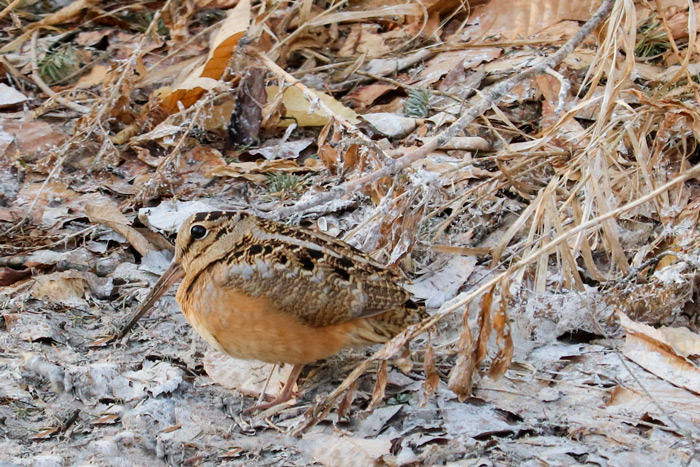
A Few Facts About the American Woodcock
The American woodcock is the only species of woodcock inhabiting North America. They are shorebirds that have evolved to live in upland settings, mainly in areas of dense and brushy, young-forest habitats.
American Woodcock Names
The American woodcock Scolopax minor is also known as the timberdoodle, Labrador twister, night partridge, and bog sucker.
American Woodcock Distribution
They can be found in the eastern half of the United States. These birds have been sighted as far north as York Factory, Manitoba, east to Labrador and Newfoundland.
American Woodcock Migration
The American woodcock is considered to be a short-distance migrant. Most of these birds will migrate south for the winter months in North America. They will travel to and from the Gulf states. Southern populations will remain in the area year-round. Either singly or in flocks, birds will migrate at night.
American Woodcock Identification
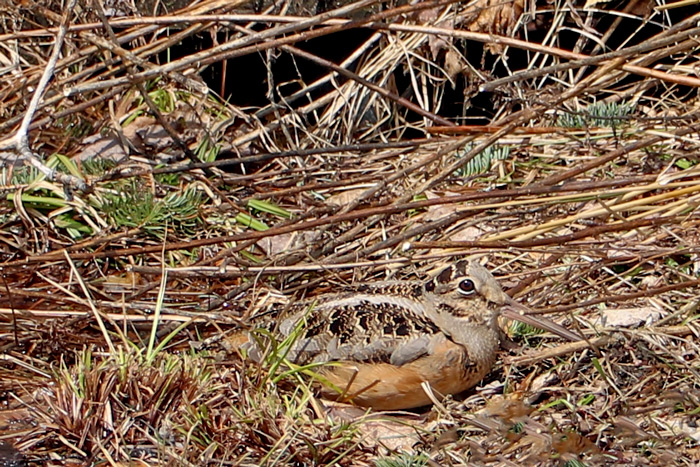
American Woodcock Size
They are plump shorebirds with very long and straight bills. Females have longer bills than males. They have large heads, short necks, and short tails that give them a round shape on the ground and in flight.
American Woodcock Color Pattern
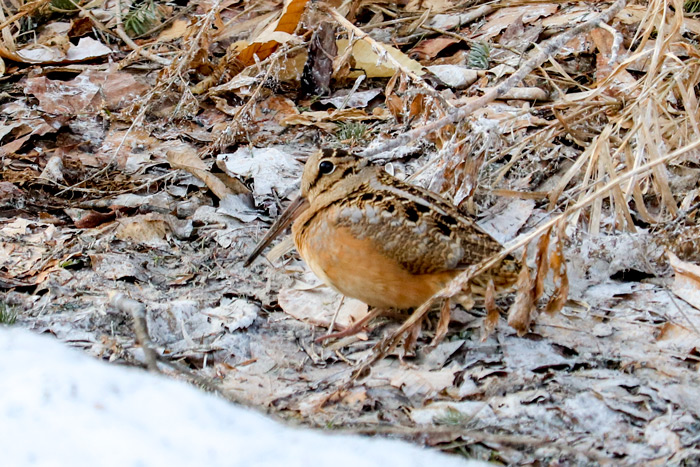
This bird is camouflaged quite nicely in its environment with its light brown, black, buff, and gray-brown colors. The face of these birds is buffy in color and the crown is a blackish color. The neck and back and neck are light gray. They have a dark and light pattern on the shoulders and brown wings. The underparts of these birds are buffy to an orange color.
American Woodcock Call
Males give a repeated, buzzy, nasal peent sound while on the ground between flights. While in the air, a displaying male will chirp songfully for as long as fifteen seconds as he zigzags downward from the highest point of his display flight.
American Woodcock Sound
The wings of the American woodcock also make a sound when the male spirals upward during his flight display. The wings make a twittering sound produced by air passing through three narrow outer primary feathers.
American Woodcock Habitat
American woodcocks spend most of their time secluded in fields and on the ground in the woods, where they probe for earthworms.
American Woodcock Behavior
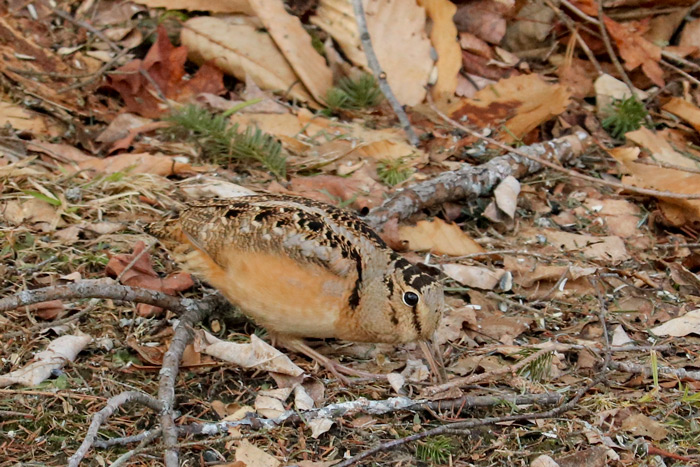
You can find the American woodcock in and along the edge of the woods, old fields, and wet meadows. While feeding, the American woodcock probes soft soil with its beak. There are sensitive nerve endings in the lower third of its bill to help locate earthworms, one of its favorite foods. They also eat ants, flies, beetles, crickets, grasshoppers, and various insect larvae, as well as snails, millipedes, centipedes, and spiders.
Here is a video of an American woodcock foraging for food:
American Woodcock Rocking
The American woodcock often rocks back and forth while walking along the ground. Researchers aren’t sure why woodcocks move this way, but some believe it may help them hunt by disturbing earthworms.
Here is a video of the unique walk of the American woodcock:
American Woodcock Dance
These birds breed during the early spring, males begin their courtship displays – sky dancing at dawn and dusk – as early as December in the southern part of the range and as early as March here in the north
During spring evenings, males will perform very elaborate courtship displays to attract their mates. They give their peent call and then launch into the air. This display flight is very distinctive and ends with a steep dive back to the ground. This behavior will occur several times at dusk and dawn.
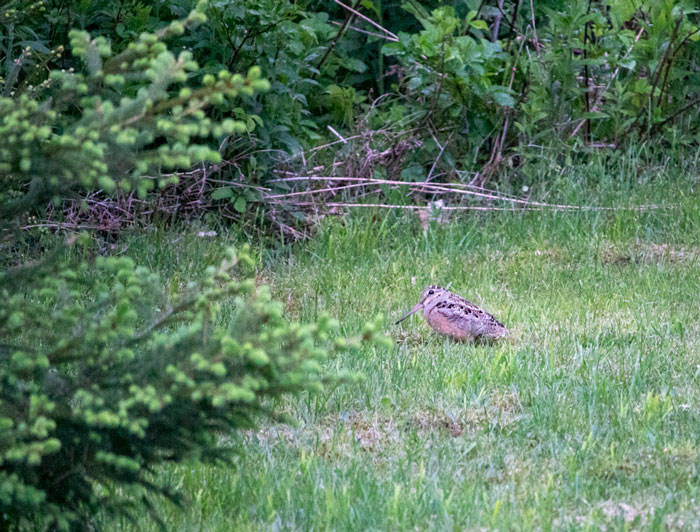
I was also able to film part of this courtship behavior on the ground:
American Woodcock Reproduction
The males may continue their courtship flights for as many as four months. Females known as hens are attracted to the display of males. A female will fly in and land near the displaying male. The male will court the female by walking stiff-legged and with its wings stretched out vertically while bobbing and bowing. Males will mate with several females.
Males do not participate in selecting a nesting site. They also do not have any role in incubating eggs or helping to raise young. The nesting site is on the ground, usually in the open woods or an overgrown field. The female makes the nest and it is constructed with dead leaves and other debris. There are usually four pinkish-buff-colored eggs that are speckled with brown and gray. The eggs are incubated for twenty to twenty-two days. After tending to her young, the young will begin to probe the soil for food. Young American woodcocks can make short flights at two weeks old. They can fly fairly well at three weeks and then independently at five weeks.
I hope you enjoyed reading about the American woodcock and hopefully, you get the chance to observe the behavior of these fascinating birds as well.
Resources used for this post:
allaboutbirds.org & audubon.org
Leave a Reply